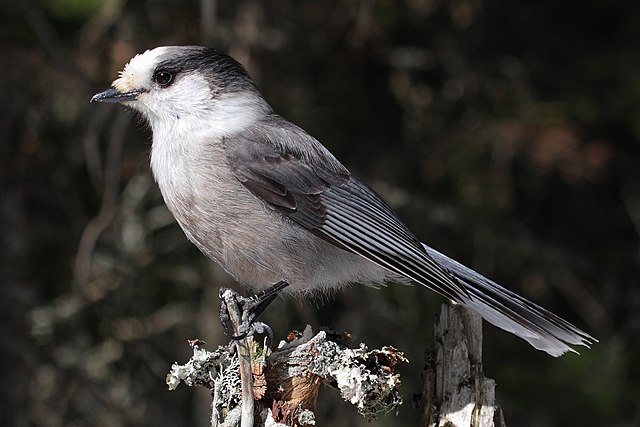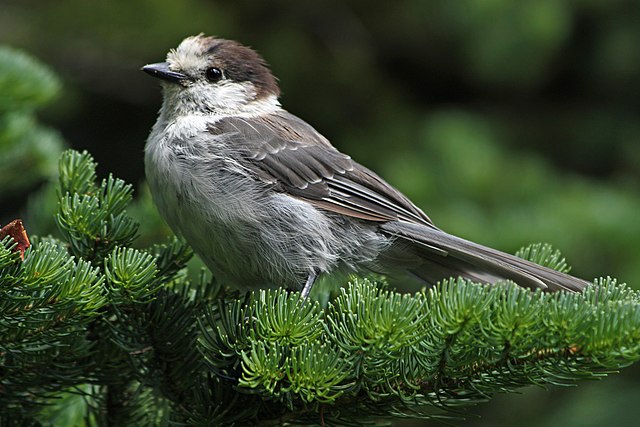The Siberian jay is a small jay with a widespread distribution within the coniferous forests in North Eurasia. It has grey-brown plumage with a darker brown crown and a paler throat. It is rusty-red in a panel near the wing-bend, on the undertail coverts and on the sides of the tail. The sexes are similar. Although its habitat is being fragmented, it is a common bird with a very wide range so the International Union for Conservation of Nature has assessed its conservation status as being of "least concern".
Siberian jay
In a spruce forest near Evenstad, Norway
Eggs in the Museum Wiesbaden
The Canada jay, also known as the gray jay, grey jay, camp robber, or whisky jack, is a passerine bird of the family Corvidae. It is found in boreal forests of North America north to the tree line, and in the Rocky Mountains subalpine zone south to New Mexico and Arizona. A fairly large songbird, the Canada jay has pale grey underparts, darker grey upperparts, and a grey-white head with a darker grey nape. It is one of three members of the genus Perisoreus, a genus more closely related to the magpie genus Cyanopica than to other birds known as jays. The Canada jay itself has nine recognized subspecies.
Canada jay
Subspecies P. c. capitalis, Grand Tetons, Wyoming
Subspecies P. c. capitalis (left) and P. c. obscurus (right); illustration by Keulemans, 1877
Perisoreus canadensis obscurus in Mount Rainier National Park







